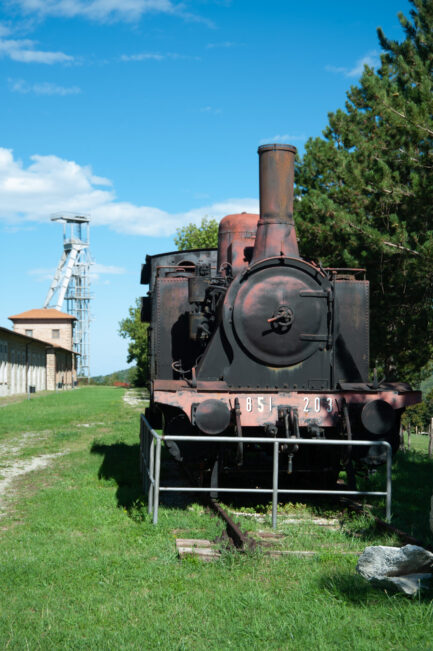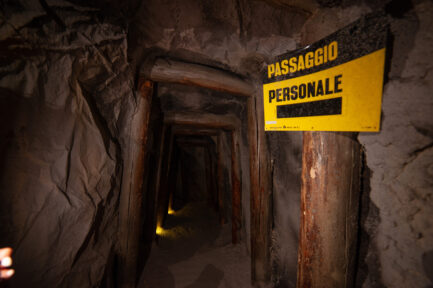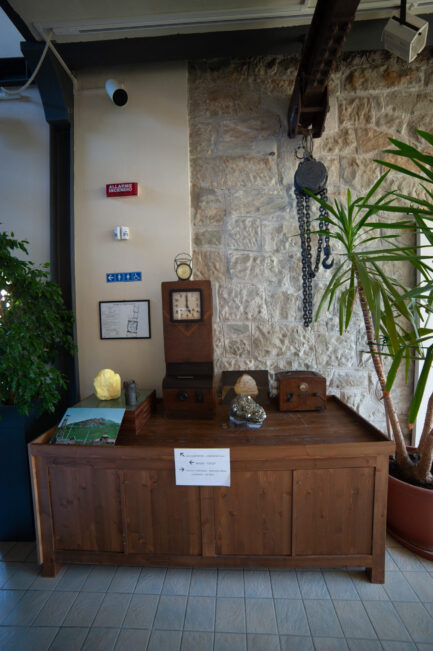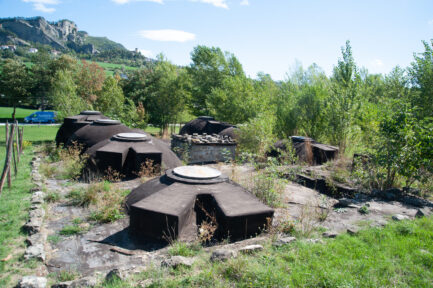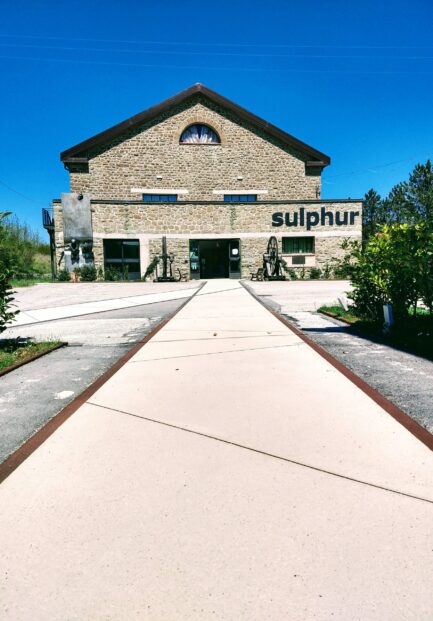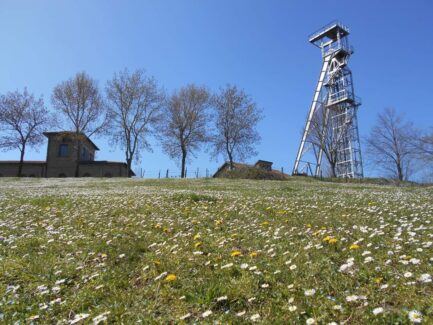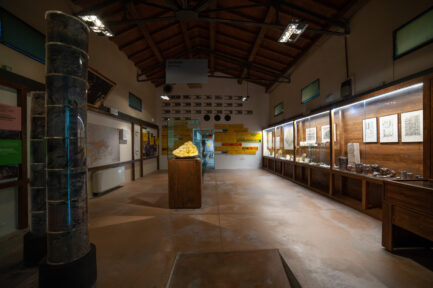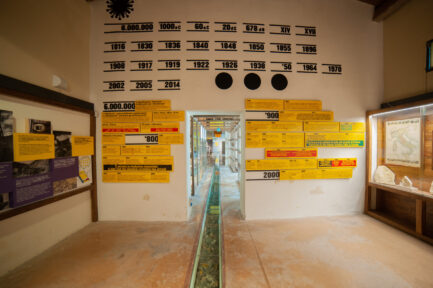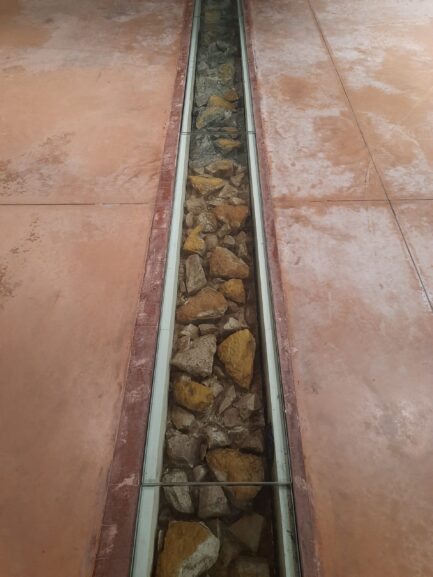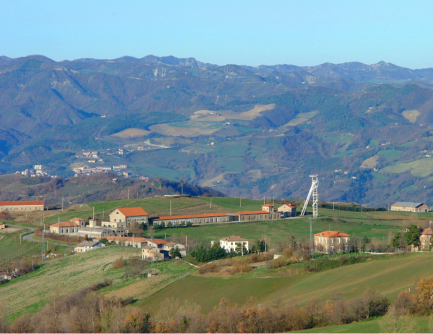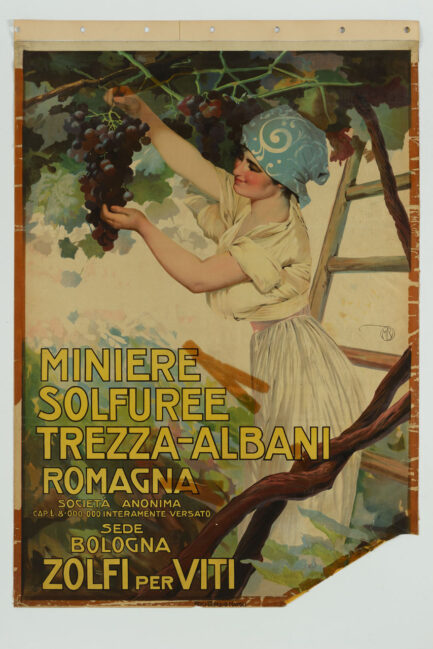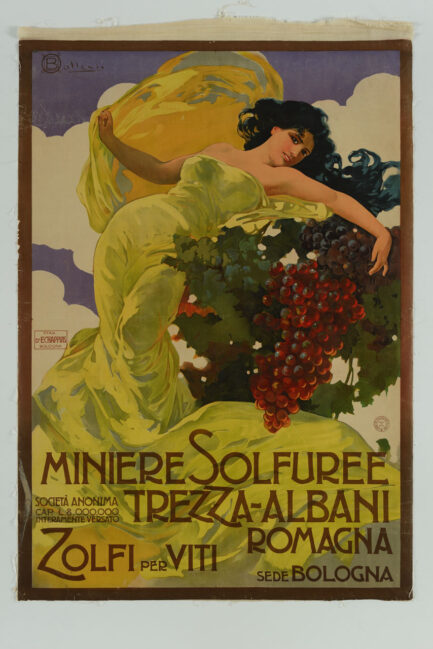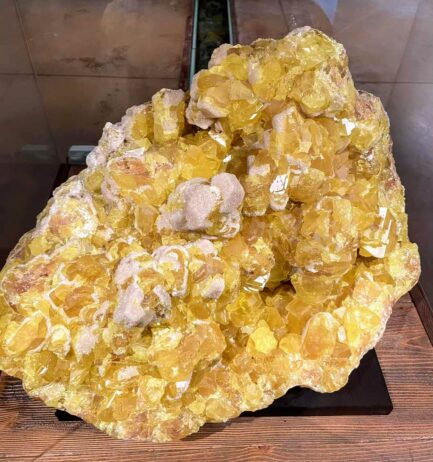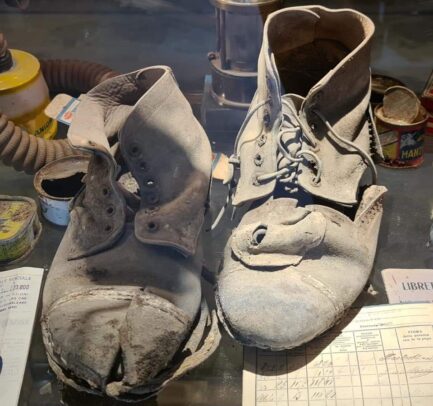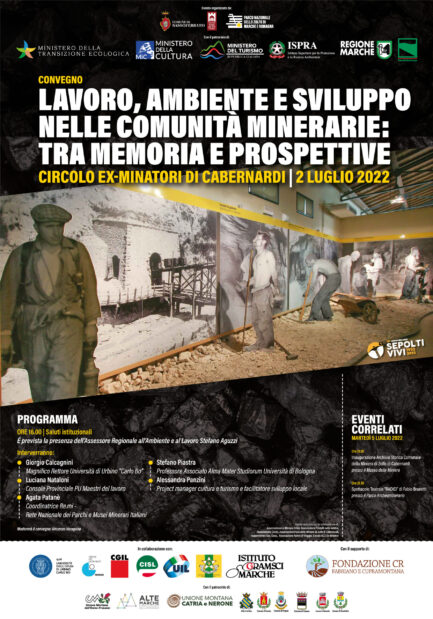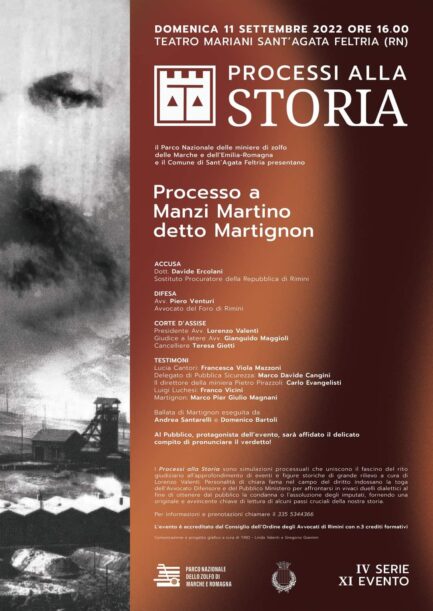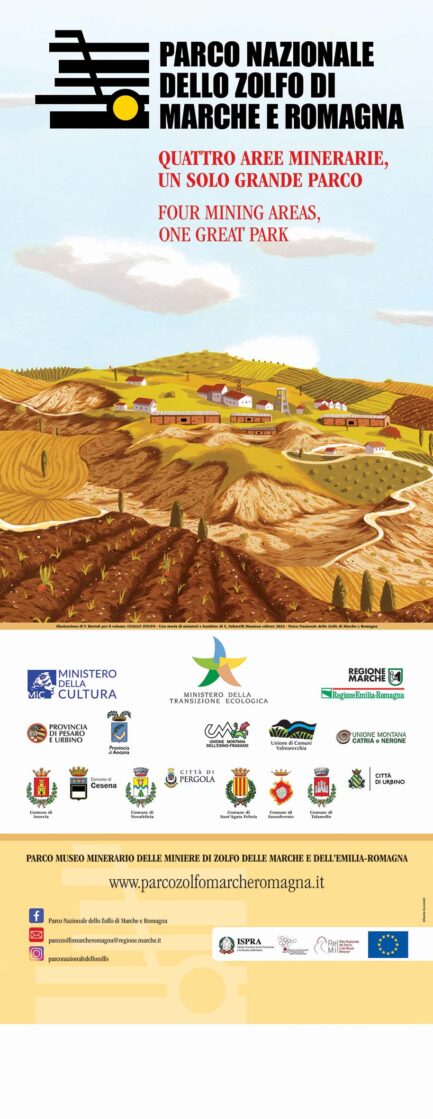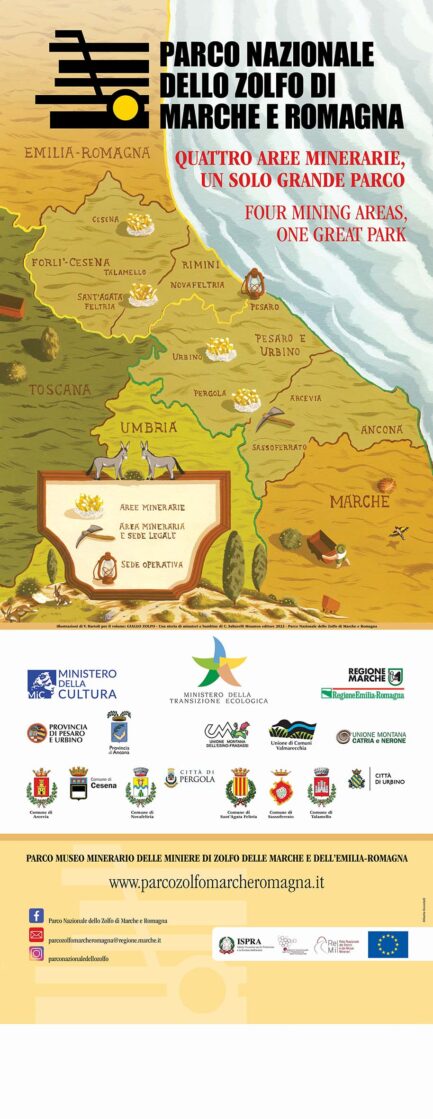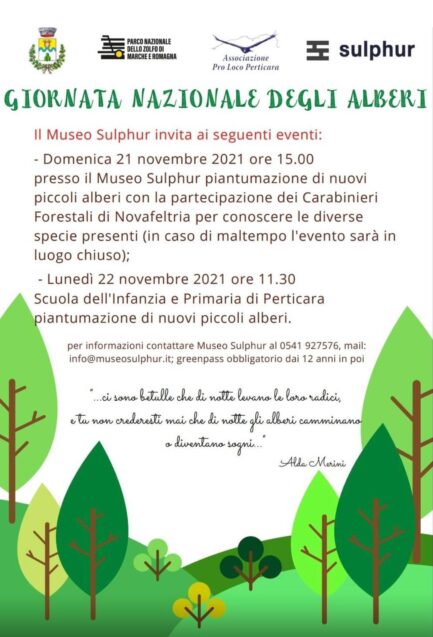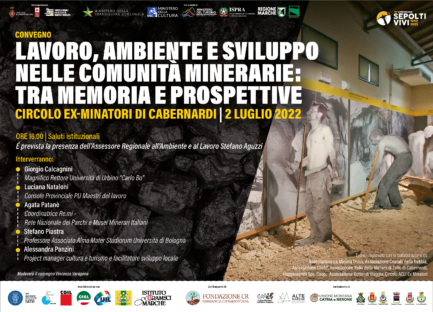Miniera di Perticara di Novafeltria
Nel 1938 lo stabilimento di Perticara raggiunse l’apice dell’attività estrattiva con produzioni di zolfo greggio che sfiorarono le 50.000 tonnellate e l’impiego di oltre 1600 dipendenti. Il ritmo produttivo dell’estrazione mineraria scandisce la vita di migliaia di uomini e donne, la fatica e l’incertezza della sopravvivenza lasciano il posto in superficie ad un carattere allegro e festoso: le bande musicali, la filarmonica, la squadra di calcio, i teatri, il cinematografo, la società del Carnevale allietano le ore di tempo libero di una comunità di cinquemila residenti.
Dal secondo dopoguerra iniziò un lento declino: la concorrenza di Paesi esteri che producevano lo zolfo con metodi alternativi e a prezzi più concorrenziali, il lento esaurimento dei giacimenti, il superamento tecnologico e il sempre più importante interesse della Montecatini per il settore chimico portarono alla drammatica chiusura della miniera di Perticara nel 1964.
A Perticara la presenza del grande giacimento solfifero ha dato precocemente origine ad un’intensa attività industriale nell’ambito di un territorio montano e collinare vasto e povero a prevalente vocazione agricola, generando una società organizzata sui ritmi del lavoro, con servizi tipici delle aree industriali di ben altre dimensioni. Si tratta di un microcosmo legato indissolubilmente alla produttività della miniera ed a scelte di politica economica dell’industria italiana. Quell’industria che a Perticara ha spento le sue luci proprio quando nel resto del Paese si realizzava il boom economico.
Nella miniera di zolfo di Perticara è stato estratto il cristallo di zolfo più grande del mondo.
Donato dall’Ing. Mezzana nel 1936 al Museo di Storia Naturale di Milano dove è tuttora conservato.
La miniera di Perticara dopo la chiusura
L’istituzione del Parco Museo Nazionale dello Zolfo di Marche e Romagna nel 2005 da parte del Ministero dell’Ambiente, che rimette in rete la “famiglia” delle miniere di zolfo del bacino gessoso-solfifero marchigiano-romagnolo, dà nuovo impulso, anche attraverso ingenti finanziamenti, al restauro ed alla valorizzazione culturale e turistica della miniera, in stretta sinergia con le popolazioni e associazioni locali e le amministrazioni comunali.
The largest sulfur crystal in the world was extracted in the Perticara sulfur mine.
Donated by Eng. Mezzana in 1936 at the Natural History Museum of Milan where it is still preserved.

In 1917 the Montecatini Company acquired the concession for the exploitation of the Perticara sulfur deposit at bankruptcy prices: thus the most important industry in the area was launched with thousands of men engaged in digging tens of kilometers of tunnels on nine levels of cultivation.
In 1938 the Perticara plant reached the peak of its mining activity with production of raw sulfur that came close to 50,000 tons and the employment of over 1600 employees. The productive rhythm of mining punctuates the life of thousands of men and women, the fatigue and uncertainty of survival give way on the surface to a cheerful and festive character: the musical bands, the philharmonic, the football teams, the theatres, the cinema, the Carnival society enliven the free time hours of a community of five thousand residents.
A slow decline began after the Second World War: the competition from foreign countries that produced sulfur with alternative methods and at more competitive prices, the slow depletion of the deposits, the technological overrun and the increasingly important interest of Montecatini for the chemical sector led to the dramatic closure of the Perticara mine in 1964.
In Perticara the presence of the large sulfur deposit gave rise to an early intense industrial activity in the context of a vast and poor mountain and hilly area with a prevalently agricultural vocation, generating a society organized on the rhythms of work, with services typical of industrial areas of quite different dimensions. It is a microcosm inextricably linked to the productivity of the mine and to the economic policy choices of the Italian industry. That industry that in Perticara turned off its lights just when the economic boom was taking place in the rest of the country.
The Perticara mine after closure
The fascination of history and of the subsoil, the desire to rediscover the heritage and to rediscover the lost site of the mine hidden under the village of Perticara led, in the 1980s, to the reopening of the Fanante tunnel. This has made it possible to organize speleological investigations aimed at monitoring the subsoil in order to know the state of stability of the mine, also with a view to its exploitation for tourist and scientific purposes. The danger due to the widespread collapses and the lack of ventilation which causes low levels of oxygen and considerable quantities of toxic gases, has limited the investigations to a few meters of tunnel: the reopening of the mine still remains a distant wish, but the search for new means for the safety of the subsoil continues.
The establishment of the National Sulfur Museum Park of Marche and Romagna in 2005 by the Ministry of the Environment gives new impetus, also through funding, for the restoration and cultural and tourist enhancement of the mine, in close synergy with the local populations and associations and the municipal administration.
Il Museo Sulphur
Inaugurato nel gennaio 1970, grazie alla Pro Loco in sinergia con l’amministrazione comunale, esso risponde al forte desiderio del territorio di conservare e tramandare la memoria della miniera e dei minatori con l’intento di valorizzare anche turisticamente la storia dell’economia dello zolfo della miniera di Perticara di Novafeltria.
L’ex cantiere solfureo Certino dal 2002 ospita un affascinante spazio museale di 3.000mq.
All’esterno il sito custodisce anche l’originale pozzo Vittoria, che domina il paesaggio e simboleggia il collegamento del paese con l’immensa città sotterranea.
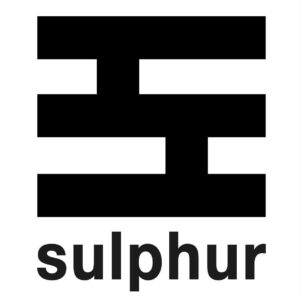
Informazioni utili
Sulphur museo storico minerario di Perticara
Via Montecchio,20 – 47863 Perticara di Novafeltria(RN)
tel e fax: 0541 927576
email: info@museosulphur.it
Sito internet: www.museosulphur.it
Facebook: @MuseoSulphurPerticara
Instagram: @museosulphur
YouTube: Museo Sulphur
Orari
Dal 1° aprile al 30 giugno:
Sabato, Domenica e festivi 10:00-12:30 e 15:00-18:00
Dal 1° luglio al 31 agosto:
Sabato, Domenica e festivi 10:00-13:00 e 15:00-18:00
Dal 1° settembre al 10 dicembre:
Sabato, Domenica e festivi 10:00-12:30 e 15:00-18:00
Durante la settimana il museo è aperto a gruppi e scuole su prenotazione
Nb: per aggiornamenti e prenotazioni, clicca qui
Punti di vista
Alcuni scatti del sito minerario
